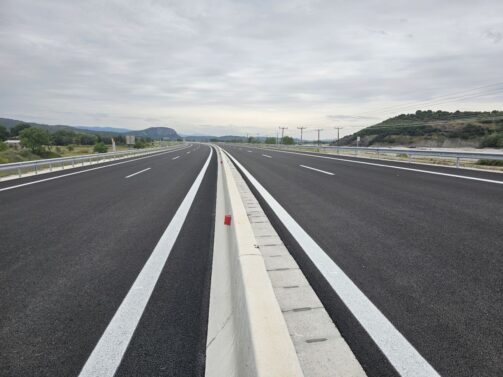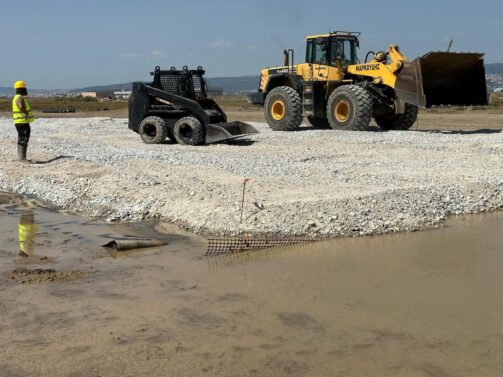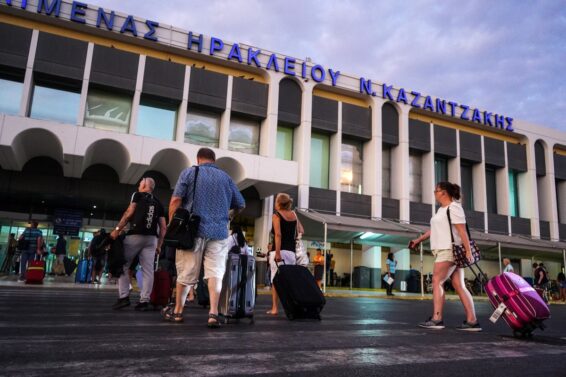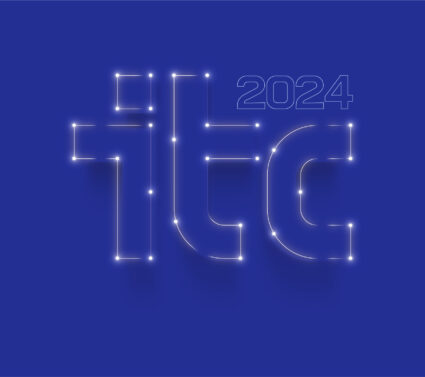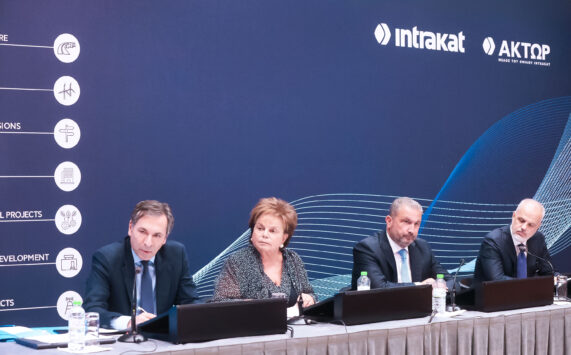The Greek highways of the future promise to be different. The network is expected to be extended to many regions of the country, while electronic tolls will be installed. The roads will operate with smart systems, more environmentally friendly while they will be “filled” with chargers along the network. At the same time, the thinking about installing RES that will make them smart is strengthened.
The extensions that are either under construction or in tender are to take place in Crete with the construction of the VOAK, in Western Greece with the Patra-Pyrgos and Amvrakia Road, in the Peloponnese with the Kalamata-Pylos-Methoni axis, in Attica with the extensions of the Attiki Odos, in Central Greece with the extensions of the E65.
The aim is that by the end of the current decade the country will reach almost 3,000 kilometers of motorways which will further increase road safety levels, the country’s ability to become a road transport hub to and from Europe and the drive for development through those axes.
Where will the network be extended?
The current highway network of Greece is almost 2,200 kilometers long and covers almost the entire country. The Olympia Odos (Elefsina-Corinth-Patra), Ionia Odos (Antirrio-Ioannina), the Nea Odos (Metamorfosi-Skarfeia), the Kentriki Odos (Xyniada-Trikala and Petalo Maliakou), the Aegean Motorway (Raches-Larissa-Kleidi Imathia), the Moreas Motorway (Corinth-Kalamata and Lefktro-Sparti) together with the wide network of the Egnatia Odos (Igoumenitsa-Thessaloniki-Kipoi Evros and vertical axes) have created an important network.
The new major addition to the network by the end of the current decade will be the VOAK with a length of almost 300 km. Last September, the eastern section Neapolis-Agios Nikolaos was signed, the first for the construction of the VOAK. The next step is the signing of the middle section from the Peninsula to Neapolis, which is implemented through PPP, while in 2023 the main section from Chania to the Hersonnisos will also be signed (if there are no delays in the bidding process). In the future, the road is expected to be extended westward to Kissamos.
On Kentriki Odos-E65, the southern section (Lamia-Xyniada) and the northern section (Trikala-Kipourio Grevenon) are being constructed. It is estimated that gradually by 2024 the highway will have its final form connecting Central Greece with Western Macedonia in less than 2 hours adding almost 100 kilometers of highways.
At the same time, the Aktio-Ambrakia highway is progressing with a length of 48.5 kilometers. About 31 kilometers are in traffic (Aktio-Vonitsa and Drymos-Ambrakia) and 17 kilometers remain where it is estimated that they will be completed and operational in 2023. The project will give new possibilities to road travel and to the Ionian islands which will be connected much more quickly compared to today. On Olympia Odos, the western extension of 75 km from Patras to Pyrgos started a few months ago, while in the future we may see a new extension in the section Pyrgos-Kalo Nero-Tsakona.
The works are also progressing on the vertical axis of Egnatia, Xanthi-Echinos, the Peripheral of Alexandroupoli. The tenders for the Thessaloniki-Edessa and Drama-Amphipoli road sections through PPP are also in the starting position. The PPP project for the Kalamata-Pylos-Methoni section is also in the final tender phase. The signatures are estimated to be a matter of the next few months. At the same time, the northern end of Ionia Odos from Ioannina to Kakavia is being prepared. With these additions, the Greek motorway network will exceed 2,900 kilometers and reach almost 3,000 kilometers.
In Athens, planning for the extensions of Attiki Odos is progressing, possibly with 4 extensions. Already the extension of Kymi Avenue is to be signed, while 2023 may be the start year for: the urban tunnel of Ilioupoli (Katehaki-L. Vouliagmenis), Koropi-Lavrio and Spata-Rafina. In Thessaloniki, it is only a matter of time before the signatures are signed for the Regional flyover, which will relieve traffic on this axis with its operation.
The “smart” highways
In the future, Greek highways will be “smart” as they will be a series of systems. This is not a process that will happen in a day, but it has already begun to take place. Among the first systems are those of Olympia Odos with “water from the air”, an innovative system that uses the humidity of the air to turn it into water for use. In the future, however, it is envisaged that bridges and tunnels will be controlled by intelligent systems which will mainly operate proactively and will be able to diagnose damage, leaks or damage to the infrastructure and also notify users in the event of accidents.
At the same time, the 5G wireless network is expected to advance to fully cover the country’s highway network, offering online services that will be able, among other things, to connect highways with users. In this way, users will be able to be informed in the future about the traffic situation of the axis they are moving, the prevailing weather, projects being carried out, possible alternative routes, etc.
Fast chargers and electronic tolls
The future of Greek highways is also predicted to be electric. Abroad there are other innovations, most of them at an experimental level, such as the charging lane for electric trucks from overhead cables, the charging lane for vehicles from the traction of tires, etc.
In the Greek network, most of the concessionaires have already started the installation of electric vehicle chargers in the MSSs of the axes that are in operation. In the future, the charger network is expected to thicken and be available almost everywhere to meet the needs that will arise as the levels of electrification increase.
But the most important thing are the fast chargers which will allow the fast recharging of the batteries to quickly continue the journey of the users. The technology is still in its early stages and currently our country is included in the last five EU member countries in terms of the number of chargers for electric vehicles per 100 kilometers of the road network.
Finally, electronic tolls, promise smart and above all fair charges. The central planning of the Ministry of Infrastructure is the installation of a modern “smart” system that will charge users in proportion to the kilometers they travel. Essentially the vehicle will be recorded by satellite as it enters and exits the highway. At the same time, incidents of delinquency by commercial vehicles will be able to be checked.
ΜΗΝ ΞΕΧΑΣΕΤΕ
- Ακολουθήστε το ypodomes.com στο Google News και μάθετε πρώτοι όλες τις ειδήσεις για τις υποδομές στην Ελλάδα
- Αν είστε επαγγελματίας του κλάδου, ακολουθήστε μας στο LinkedIn
- Εγγραφείτε στο Ypodomes Web TV








